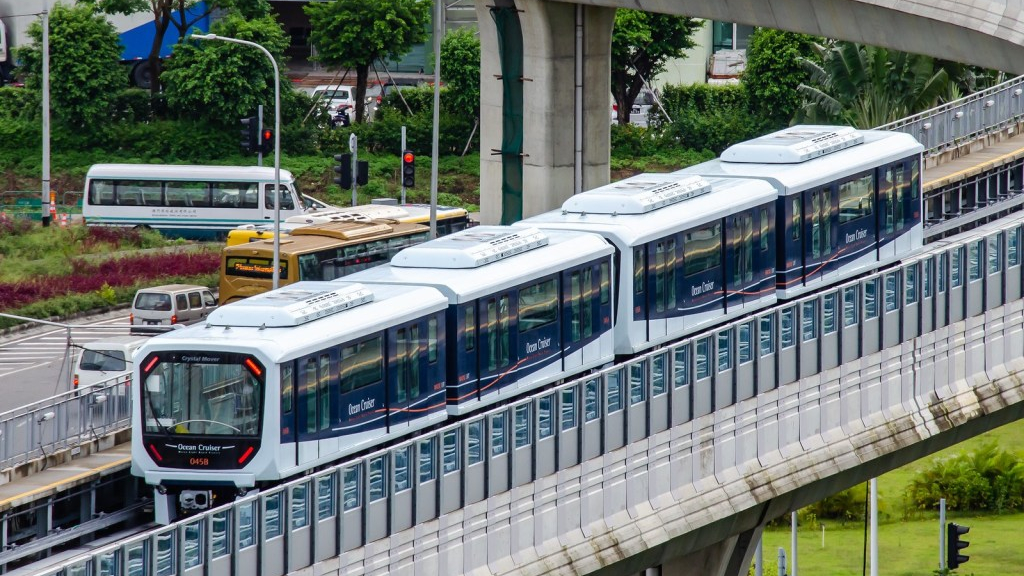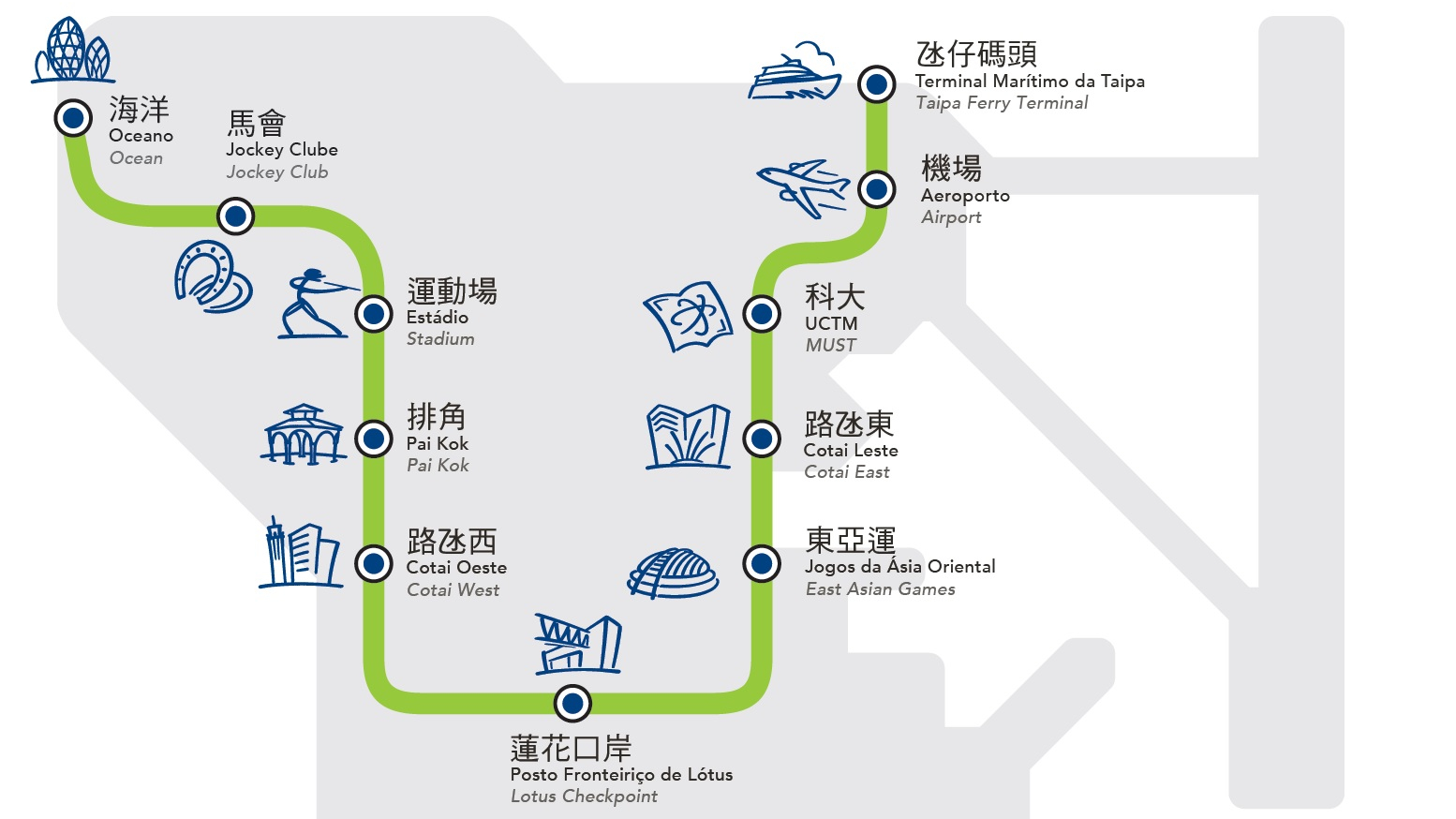The Macao Light Rail Transit (LRT) system is the Macao Special Administrative Region's (SAR) 20th anniversary present to all its residents.
At a little past 3:30 p.m. Monday, the Taipa Line of the LRT opened to the public and, according to the local government, it will be free of charge for residents until December 31.
The tickets prices will range between six, eight, and 10 patacas (0.74, 0.99, and 1.24 U.S. dollars, respectively), depending on the number of stations used. The trains will run from 6:30 a.m. to 11:15 p.m. from Monday to Thursday, and from 6:30 a.m. to 23:59 p.m. on weekends and holidays, every five to 10 minutes.
The LRT Taipa Line is about 9.3 km long and has 11 stations, covering main residential communities in Taipa city center, Taipa old village, and tourist area. It links three major sea, land, and air ports of Macao.

Macao LRT during tests. /Photo Macao government
Macao LRT during tests. /Photo Macao government
Expansion is a certain thing
"At last, the day has come," said Secretary for Transport and Public Works, Raimundo Arrais do Rosário, in the event, cited by Ou Mun Tin Toi.
Official expectations indicate the system will receive 20,000 passengers every day. Macau LRT Corporation hired 600 people, 80 percent of which are local residents, said the official.
Raimundo Arrais do Rosário guaranteed that the future projects for the system include expansion to Hengqin, Barra and Seac Pai Van.
At the inauguration, Ho Cheong Kei, chairman of the Board of the Macau Light Rapid Transit Corporation, said that during the eight years of the construction, the project faced several difficulties and challenges, as well as human resource limitations, making it hard to move forward. During that process, even if there were mistakes and deficiencies, everyone involved accumulated valuable experience, which will be also crucial in the next steps of the project, the chairman noted.
"Today's opening is just the first step. In the future, the coverage will be further expanded," said Ho Cheong Kei.
'Milestone'
The project was discussed back in 2002, but only in 2011 did the construction begin. Previous Secretary for Transport and Public Works, Ao Man Long, was arrested for corruption, and its succession with Lau Si Io delayed the construction. Only when the new Secretary for Transport and Public Works, Raimundo Arrais do Rosário, took office, in 2014, the project started to flow faster.
Even so, during Raimundo Arrais do Rosário mandate he had legal issues to solve: one company was fined for problems during the construction, and other appealed to the courts being a mistake in the adjudication process.
According to the Civil Engineering Laboratory of Macao, the entity responsible for the quality control, this is a "milestone for the development of the region and the civil engineering industry in Macao.”
The LRT is seen as the hope for improving the small territory transportation issues, by helping move the high numbers of tourists and locals from the road system.

Macao LRT route map. / Photo Macao LRT website
Macao LRT route map. / Photo Macao LRT website
Environmentally friendly
The carriages are unmanned, and the system itself is environmentally friendly as it produces low noise during operation and zero emissions.
Taipa line costed less than 10.2 billion patacas (1.3 billion U.S. dollars), but the global expenses ascend to 16.4 billion (two billion U.S. dollars), including Taipa and Seac Pai Van lines, Barra station, consulting and evaluation services, preparatory works and carriages. Even though this value is higher than expected, the project is set to continue.
From the main route opening today, the LRT will have a 1.5-kilometer section linking it to the social housing compound of Seac Pai Van, in Coloane. The public tender has already opened.
At the western end of the line, a connection to the Barra station will be built, in the peninsula, which is due to be completed in 2024. Besides, there will also be a connecting section between the eastern end in the New Development Zone A. Another section in the south of the peninsula is also considered.